Categories: Interesting electrical news, How does it work
Number of views: 206201
Comments on the article: 17
How are solar panels arranged and work?
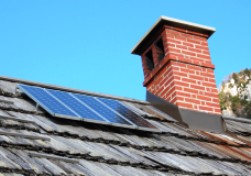 Nowadays, almost everyone can collect and get at their disposal independent solar power source (in the scientific literature they are called photovoltaic panels).
Nowadays, almost everyone can collect and get at their disposal independent solar power source (in the scientific literature they are called photovoltaic panels).
Costly equipment is compensated over time by the ability to receive free electricity. It is important that solar panels are an environmentally friendly source of energy. In recent years, prices for photovoltaic panels have dropped tenfold and they continue to decline, which indicates great prospects for their use.
In a classic form, such an electric power source will consist of the following parts: directly, a solar battery (direct current generator), a battery with a charge control device and an inverter that converts direct current to alternating current.
Solar panels consist of a set solar cells (photovoltaic converters)that directly convert solar energy into electrical energy.
Most solar cells are made from silicon, which has a fairly high cost. This fact will determine the high cost of electrical energy, which is obtained by using solar panels.
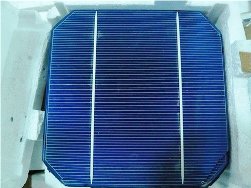 Two types of photoelectric converters are common: made from single-crystal and polycrystalline silicon. They differ in production technology. The former have an efficiency of up to 17.5%, and the latter 15%.
Two types of photoelectric converters are common: made from single-crystal and polycrystalline silicon. They differ in production technology. The former have an efficiency of up to 17.5%, and the latter 15%.
The most important technical parameter of a solar battery, which has a major impact on the efficiency of the entire installation, is its net power. It is determined by voltage and output current. These parameters depend on the intensity of sunlight entering the battery.
E.s. (electromotive force) of individual solar cells does not depend on their area and decreases when the battery is heated by the sun, by about 0.4% per 1 g. C. The output current depends on the intensity of solar radiation and the size of the solar cells. The brighter the sunlight, the greater the current generated by the solar cells. Charging current and power output in cloudy weather is sharply reduced. This is due to a decrease in the current output by the battery.
If the battery illuminated by the sun is closed to some load with resistance Rн, then an electric current I appears in the circuit, the value of which is determined by the quality of the photoelectric converter, the light intensity and the load resistance. Power Pн, which is released in the load, is determined by the product Pн = InнUн, where Un is the voltage at the battery terminals.
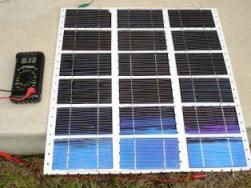 The greatest power is allocated in the load at some optimal resistance Ropt, which corresponds to the highest coefficient of efficiency (efficiency) of converting light energy into electrical energy. Each converter has its own Ropt value, which depends on the quality, size of the working surface and the degree of illumination.
The greatest power is allocated in the load at some optimal resistance Ropt, which corresponds to the highest coefficient of efficiency (efficiency) of converting light energy into electrical energy. Each converter has its own Ropt value, which depends on the quality, size of the working surface and the degree of illumination.
Solar battery consists of individual solar cells that are connected in series and parallel in order to increase the output parameters (current, voltage and power). When the elements are connected in series, the output voltage increases, while in parallel, the output current increases. In order to increase both current and voltage, these two connection methods are combined. In addition, with this connection method, failure of one of the solar cells does not lead to failure of the entire chain, i.e. improves the reliability of the entire battery.
Thus, the solar battery consists of parallel-series-connected solar cells. The value of the maximum possible current given by the battery is directly proportional to the number of connected in parallel, and the emf- series-connected solar cells. So combining connection types assemble the battery with the required parameters.
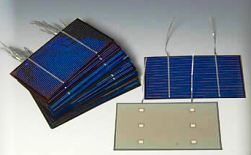 Solar cells of the battery are shunted by diodes. Usually there are 4 of them - one for each ¼ part of the battery. Diodes protect parts of the battery from failure, which for some reason are darkened, that is, if at some point in time the light does not fall on them. At the same time, the battery temporarily generates 25% less output power than under normal sunlight on the entire surface of the battery.
Solar cells of the battery are shunted by diodes. Usually there are 4 of them - one for each ¼ part of the battery. Diodes protect parts of the battery from failure, which for some reason are darkened, that is, if at some point in time the light does not fall on them. At the same time, the battery temporarily generates 25% less output power than under normal sunlight on the entire surface of the battery.
In the absence of diodes, these solar cells will overheat and fail, as they turn into current consumers for the duration of the dimming (batteries are discharged through solar cells), and when using diodes, they are bypassed and the current does not flow through them. Diodes must be low resistance in order to reduce the voltage drop across them. For these purposes, Schottky diodes have recently been used.
Received electrical energy is stored in batteries and then transferred to the load. Batteries - chemical current sources. The battery charge occurs when a potential is applied to it, which is greater than the battery voltage.
The number of solar cells connected in series and in parallel must be such that the operating voltage supplied to the batteries, taking into account the voltage drop in the charging circuit, slightly exceeds the voltage of the batteries, and the load current of the battery provides the required value of the charging current.
For example, to charge a 12 V lead-acid battery, you need to have a 36-cell solar battery.
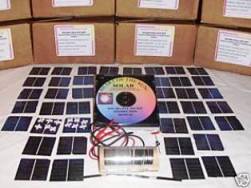 In weak sunlight, the battery charge decreases and the battery gives off electrical energy to the power receiver, i.e. rechargeable batteries are constantly working in the mode of discharge and recharge.
In weak sunlight, the battery charge decreases and the battery gives off electrical energy to the power receiver, i.e. rechargeable batteries are constantly working in the mode of discharge and recharge.
This process is controlled. special controller. With cyclic charging, a constant voltage or constant charge current is required.
In good light conditions, the battery quickly charges up to 90% of its rated capacity, and then at a lower charge speed to full capacity. Switching to a lower charge speed is performed by the controller of the charger.
The most efficient use of special batteries is gel (sulfuric acid is used as an electrolyte in the battery) and lead batteries, which are made using AGM technology. These batteries do not require special installation conditions and require no maintenance. The passport service life of such batteries is 10-12 years with a discharge depth of not more than 20%. Batteries should never be discharged below this value, otherwise their service life will be drastically reduced!
The battery is connected to the solar battery through a controller that controls its charge. When the battery is charged at full power, a resistor is connected to the solar battery, which absorbs excess power.
In order to convert a constant voltage from a battery to an alternating voltage, which can be used to power most power consumers together with a solar battery, you can use special devices - inverters.
Without the use of an inverter, a solar voltage can be powered from solar panels, including various portable equipment, energy-saving light sources, for example, the same LED lamps.
Read also on this topic: Portable Solar Chargers
See also at e.imadeself.com
:
